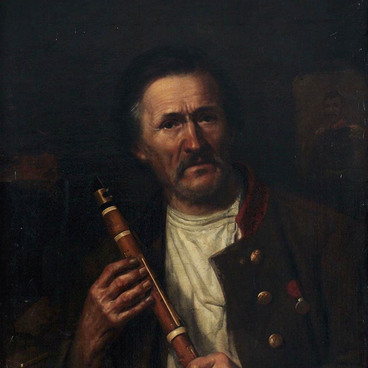At the academic exhibitions of the second half of the 19th — early 20th century, the works of Vladimir Donatovich Orlovsky, professor of the St. Petersburg Academy of Arts, captured the viewers’ attention more than any others. “Evening. Seashore” from the collection of the Sevastopol Museum of Art is one of the best paintings among the artist’s romanticized seascapes.
After graduating from the Academy of Arts with a gold medal, Vladimir Orlovsky was sent for three years on a government-subsidized trip to Western Europe. The artist worked in Paris, Switzerland, and Italy, where he began to paint marinas and achieved considerable success. After returning to Russia, he painted studies and nature sketches for a few more years. Orlovsky created large spectacular paintings and was subsequently (in 1874) awarded the title of Academician for six of them. These include a work from the Sevastopol collection, displayed in 1874 at the academic exhibition under the title “Sunset. Porto d’Anza”, and in 1882 — at the National Exhibition in Moscow.
The painting was immediately purchased by the collector Kozma Soldatyonkov, but after his death, according to his will, the work was donated to the Rumyantsev Museum. “Evening. Seashore” was reproduced in the museum pre-revolutionary catalogs as one of the painter’s best works and only came to Sevastopol after the Rumyantsev Museum was closed.
The painting depicts a seaside town located forty kilometers from Rome on the Tyrrhenian coast — Porto d’Anzio. Numerous villas were built there, the most famous being Nero’s villa, which was called an “archaeological wonder”; unfortunately, by the 19th century, very little of it had survived. Alexander Benois, who visited the place two decades after Orlovsky left fine memories of the desolation of this picturesque corner, his own expectations, and eventual disappointment. Probably, that is why Vladimir Orlovsky was not inspired by the remains of the ruins of the palace, choosing instead to paint “an unpretentious fishing harbor”, a “passing” day, “studied the sculpturesque poses” of languid inhabitants of Porto d’Anzio, and admired the “crystal clear emerald water”.






